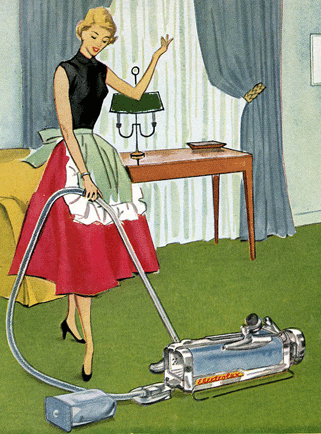|
Thread Number: 17750
Kirby Motor Testing Using Wattmeter |
[Down to Last] |  |
Post# 192460 7/31/2012 at 04:28 (4,279 days old) by KirbyClassicIII  (Milwaukie, Oregon) (Milwaukie, Oregon) |
||

For those of you familiar with testing your Kirby motors using an ohm meter or wattmeter, for the Heritage series, these steps are to be taken:
a. OHM METER (1) This battery powered testing device provides a safe way to check continuity of wiring harnesses and electrical components. (2) The ohm meter also can be used to safely identify a dead ground in those instances where the high voltage test is not practical. b. WATTMETER (1) This instrument measures power consumption as the Kirby is running. (2) The normal rating/reading for the Heritage II in LOW speed range with bag and nozzle in place and the brush roll turning should be 450 to 500 watts. (3) With the hose attached as in HIGH speed, the normal reading should be 550 to 600 watts. (4) Replace the armature if the reading is approximately two times normal (in either mode). (5) Replace the field if the reading is from two to three times normal (in either mode). (6) If either armature or field is replaced because of poor performance, the motor should be "run in" for no less than 15 minutes. During and after this run in, readings should be taken to confirm satisfactory services have been performed. (7) Marginal increases in wattage consumption can indicate possible future problems and should be watched closely. While the whole 550-600W (hose mode) and 450-500W (carpet mode) applies to the Heritage series, here's the approximate wattage ratings as should be seen on the wattmeter for the older series: 505-513 (513 before 4/53): 300-325W (hose mode) and 250-275W (carpet mode) 513 (after 4/53) to Sanitronic VII: 400-425W (hose mode) and 350-375W (carpet mode) Dual Sanitronic 50 and 80, and Classic (before 4/70): 500-550W (hose mode) and 400-425W (carpet mode) Classic (after 4/70), Classic Omega, Classic III and Tradition: 600-650W (hose mode) and 500-550W (carpet mode) ~Ben (KirbyClassicIII) | ||

 Comes to the Rescue!
Comes to the Rescue!